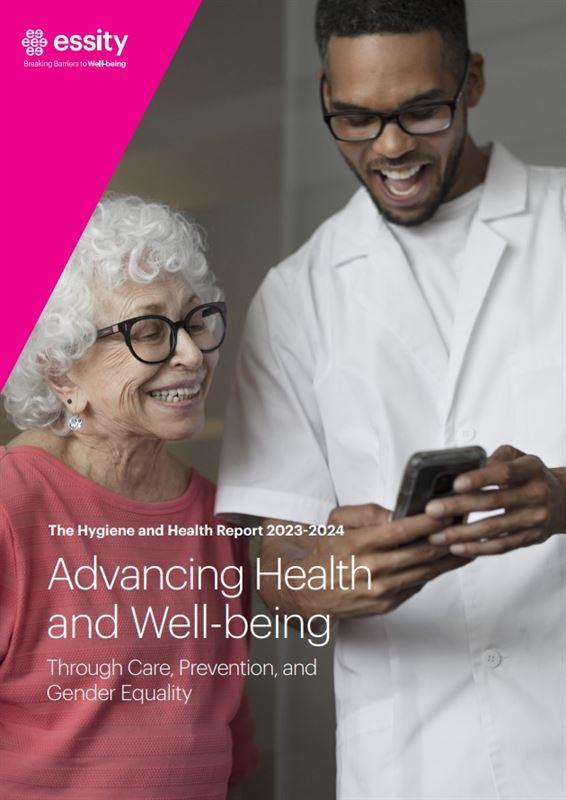Essity Hygiene and Health Report 2023–2024: Promoting Value-Based Care
Advancing Health and Well-being: The Care Economy

Originally published on Essity.com
Promoting value-based care
The purpose of care in the care economy is to improve health and quality of life for people cared for at a sustainable total cost level. Healthcare systems need to generate value both for individuals and for society at large.
Because of the increased pressure on healthcare systems, it is more important than ever to recognize that the value in healthcare comes from the right combination of quality and cost. If society wants the value of care to remain constant or increase, one must think conceptually about relevant patient outcomes, and how these outcomes can be achieved or improved in the most cost-efficient way.
To address these challenges, the way care is purchased and delivered needs to change. Value Based Healthcare (VBHC) is one way to do this. It is a collaborative, needs-based approach that applies to a variety of patients and spans over payers, providers, the industry, and society, with the goal to achieve better outcomes in a cost-efficient way.
Value-based healthcare (VBHC) requires:
- A holistic evaluation of patient, carer, care providers, and payers’ needs, along the entire care pathway, while also addressing societal needs at large.
- An optimized care pathway with the support of relevant products that optimizes outcomes that matter to patients and different stakeholders. This improves the effectiveness and efficiency of care delivery.
- A shift towards total cost from “price per product”-thinking, to ensure optimal use of available resources.
Innovation as an enabler for a better care economy
One example of an area in which innovation is needed is in continuously increasing knowledge among the growing number of family carers. Roughly 80% of care provision comes from family members, and roughly two-thirds of all people globally will become caregivers at some point in their lives.1
Despite these figures, the vast majority of family caregivers have no healthcare related training. In addition, many family carers do not recognize themselves as such and do not seek training or external support even when it is available. Digital solutions can help family carers to keep track of and monitor their care duties, facilitate access to knowledge and training about their roles and rights as carers, and can contribute to positive health outcomes by individualizing care. Leveraging digital tools to support caregivers’ work improves care conditions for the care receiver, alleviates stress and mitigates the negative aspects of caregiving on healthcare systems and economies. Increased societal awareness of family caregiving will make it easier for caregivers to reach out for the support, education, and training available.
Roughly 80% of care provision comes from family members.
Calls for action within the care economy
- Recognize and value care: Joint action is needed to elevate the significance of care in society. A shift is needed from seeing care investments as costs, to truly acknowledging the substantial returns that care yields in personal well-being, societal and environmental benefits as well as in economic returns.
- Make care work visible: There is a need to better acknowledge the contributions of caregivers who dedicate their time, skills, and empathy to support others. There needs to be a greater focus on making these contributions visible and listening to the needs of patients and persons receiving care as well as professional and family caregivers.
- Invest smarter and enable new care innovations: Businesses have a pivotal role in introducing new innovations that support caregivers and care recipients. Sustained investments in innovative technology are needed to address the care economy’s challenges, but it is equally important to ensure that these innovations receive ongoing funding.
- Promote person-centered care: Implementing a person-centered approach to care where persons receiving care are listened to, respected and where their personal needs and preferences are front, and center is essential in improving the quality of care and care outcomes.
To make this happen, the person receiving care needs to be at the center of decision-making with tailored support that also enables active participation in the care journey.
- Promote self-care (where possible): Public health initiatives can help support independence and allow for individual responsibility by prioritizing and more systematically approach self-care options - empowering people who receive care. One such example is to support people to strengthen continence by making innovative solutions for self-care more easily available and accessible and making education and information on continence care available both to carers and to care receivers.
- Promote value-based care solutions: By placing patient needs and outcomes at the core, person-centered care is enabled and facilitates the adoption of innovative solutions and approaches. In this approach, diverse stakeholders collaborate from the outset, engaging in innovation and care model development. Such early collaboration enables a flexible and customizable procurement process that prioritizes genuine value for patients, providers, and society.
Download the Essity 2023-2024 Hygiene and Health Report to learn more
1Brody, J. E. (2008, November 10). When Families Take Care of Their Own. The New York Times.

